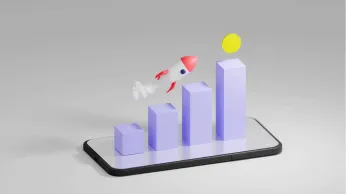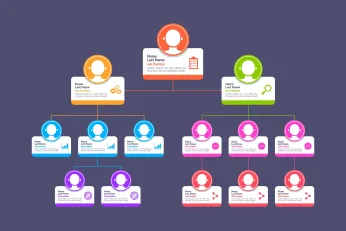Pembayaran Insentif 101: Panduan untuk Implementasi, Manfaat, dan Lainnya
Incentive pay is a powerful tool to drive employee motivation and performance. Learn how to structure an effective incentive pay program that aligns with business goals and rewards success.
Di halaman ini
Motivation is a catalyst for better performance. In an organization, incentives motivate employees toward efficient performance. The sales team has a huge task of generating more prospects. Incentive pay is a big boost for them in this process. We will discuss incentive pay and how you can design a systematic pay program.
Apa yang dimaksud dengan gaji insentif?
Gaji insentif adalah tunjangan tambahan yang diperoleh anggota tim penjualan yang bersifat variabel selain dari gaji reguler mereka. Hal ini dihitung berdasarkan kinerja dan kontribusi mereka terhadap tujuan bisnis.
These incentives may be monetary or non-monetary. They may be distributed to all without any fixed criteria or to a specific member for meeting certain goals. If implemented well, a business may notice that:
- The employees feel motivated when offered incentives in addition to their regular salary. They get more involved with their work and effectively contribute to the business goals.
- Karyawan yang tidak tertarik mungkin akan sering mengambil cuti. Hal ini berdampak pada perusahaan dan juga meningkatkan biaya. Insentif mengurangi ketidakhadiran dengan meningkatkan semangat kerja karyawan.
- It encourages high performance and exceptional customer service within the sales team.
- It also establishes quality benchmarks within the sales reps to foster a productive and collaborative company culture.
But there are pros and cons to incentive pay which a company should know to design the aptly structured incentive pay plan.
Pros and cons of incentive pay:
Following are the pros and cons of incentive pay:
Pros:
Incentive pay offers several benefits. It boosts employee productivity and motivation. Morale improves when goals align with company objectives.
- Improves employee productivity: Rewards encourage harder work toward specific goals. Incentive pay motivates even those not meeting targets.
- Increases employee retention: Showing appreciation builds loyalty. Valued employees stay longer. This reduces turnover costs and boosts stability.
- Enhances organizational climate: Incentive pay improves workplace perception. It attracts talent by motivating employees. Team incentives promote collaboration and break down barriers.
Kekurangan:
Incentive pay also presents some downsides. Focus can shift from performance to rewards. This might reduce cooperation and quality.
- Only provides a short-term benefit: Motivation might not last. Tunnel vision can develop, hurting creativity and increasing stress.
- Affects employee ethical behavior: Unethical shortcuts may occur to meet goals. Employees may feel pressured to act dishonestly for bonuses.
- Unhealthy work environment: Competition can foster theft and cheating. Some employees may feel undervalued. This can cause tension and conflict.
What are the differences between incentive pay, merit pay, and bonuses?
These are all ways to reward employees. However, they work differently. Incentive pay is for achieving specific goals. Merit pays increases base salary based on performance. Bonuses are one-time rewards.
Fitur | Pembayaran Insentif | Merit Pay | Bonus |
What it is | Pay for specific achievements. | Increase base pay for performance. | One-time reward. |
Frequency | Varies; project or goal based. | Typically, annual. | Varies; can be regular or irregular. |
Dampak | Variable pay. | Permanent increase to base pay. | One-time payment. |
Based on | Specific, measurable goals. | Overall performance. | Individual or company performance. |
Contoh | Sales commission. | Annual raise based on review. | Holiday bonus. |
Incentive pay: Casual vs. structured
Incentives are of two types: casual and structured. Casual incentives are small gifts. Vouchers are an example. They show appreciation for hard work. They are not scheduled.
Structured incentives are planned. They are monitored. They aim to achieve targets. Sales growth is an example. Year-end bonuses are common.
Fitur | Casual Incentives | Structured Incentives |
Nature | Small gifts, tokens | Planned and monitored programs |
Tujuan | Show appreciation | Achieve specific targets |
Schedule | Unscheduled | Scheduled |
Examples | Vouchers | Year-end bonuses |
Target Metrics | No Predetermined Metrics | Sales, Customer Satisfaction, Production efficiency |
17 Types of incentive pay you can implement in your plan
Insentif dapat berupa uang atau non-moneter. Berikut adalah daftar insentif yang ditawarkan kepada karyawan untuk meningkatkan semangat kerja mereka.
8 Monetary incentives
Insentif yang imbalannya berupa uang disebut insentif moneter. Mari kita lihat beberapa di antaranya.
- Bonus: A yearly bonus is issued in many organizations. This is not linked to the performance but is given to all alike. This is over and above the regular monthly salary given to motivate employees.
- Profit sharing: Employees are given a bonus as a percentage of the total profits earned by the company. This entirely depends on the profits earned in a year. This annual payout depends on the company’s overall performance and not on any individual target achievement. If the profits are higher, the bonus also increases.
- Gain sharing: Gain sharing has an underlying condition. Here, the company expects the employees to achieve certain targets or fixes a performance criterion. When the same is achieved, the employees are paid a bonus. This should not be confused with profit sharing. The employees are paid bonuses relative to their performance only.
- Annual incentives: This annual payment is matched as a percentage of the employee’s salary. This lump sum is paid when the employees reach the targets set for them. It may or may not be paid in any particular year.
- Spot rewards: Rewarding on the spot is a strategy that goes well with the employees. Instant recognition without waiting for the year-end or completion of appraisal is a motivator for the employees. This can be monetary or non-monetary. As and when an employee achieves something special, he is recognized through spot rewards.
- Project bonus: This bonus category is given to a set of employees who work on a particular project. The project manager assesses each team member's contribution and determines the bonus on the successful completion of the project. The percentage of the bonus is fixed at the start of the project.
- Merit-based bonus: As the name indicates, this bonus is related to the performance of the employees. Every year, an appraisal is conducted, during which the team leader assesses the employee's contribution in relation to the goals and suggests areas for improvement. A fixed percentage of salary is paid as a bonus, which may vary between employees of the same project also.
- Referral bonus: Many organizations prefer to recruit staff through employee referrals. A referral drive is conducted every time there arises a vacancy. Employees are paid a bonus for every person they refer. Recruiting through referrals saves a lot of the organization’s money and effort. The company gives back to the staff in the form of bonuses.
9 non-monetary incentives
Imbalan selain dalam bentuk uang adalah insentif non-moneter.
- Paid vacations: Employees are given days off to enjoy a vacation but are still paid for those days. A fixed number of days every year are given as paid vacations so that the employees can relax and get back to work with motivation.
- Company outings: Companies arrange yearly outings for employees and their families. This means a lot to the employees and boosts their morale. This also helps establish better relations with the staff.
- Gift cards: Some companies give away gift cards for a specific sum so that the employees can use them for shopping. Instead of buying something that is the company’s choice, they prefer to leave the choice to the sales reps.
- Membership cards: Some companies gift their staff membership cards of gyms or health clubs. This indicates their interest in the well-being of the employees. For employees who often find themselves staying late, integrating rewards such as membership cards for pre-made single meal kits can offer a much-appreciated convenience that extends beyond the usual monetary incentives.
- Work-from-home days: This is a unique incentive that plays a great role in boosting the morale of the staff. Employees can pick certain days to work from their homes. This flexibility on the part of the company helps improve the productivity of the staff.
- Trophies: Deserving employees are presented with trophies for their contribution to the company’s growth. This motivates them to give more to the company. Annual events are conducted where trophies are distributed to the best performers of every team.
- Meal coupons: Companies give coupons that can be used instead of cash at restaurants. Employees attach more value to such perks rather than monetary payment.
- Entertainment coupons: Coupons that can be used instead of cash in theatres, malls, and other entertainment zones are also given by companies.
- Training programs: Training sessions that add value to an employee’s experience are thoughtful incentives. They help in career advancement and are welcomed by employees.
Karyawan terpilih yang menunjukkan peningkatan kinerja yang patut dicontoh dapat ditawari insentif tersebut. Hal ini akan memotivasi anggota tim yang lain untuk berusaha lebih keras agar memenuhi syarat untuk mengikuti sesi pelatihan tersebut.
A large CNC machine manufacturer in Asia was growing fast. They increased automation on their machines. The company had over 32 sales and service locations worldwide. They needed a strong platform to automate commissions. They wanted to give sales representatives access to incentive data. They also wanted to reduce the time it took to calculate incentives. A key goal was to lessen the need for sales managers to handle commissions manually.
Solution:
The company used Compass' sales commission management solution. Compass streamlined the commission process. It used a commission calculation and automation engine. This gave transparency. It also used a gamification platform to make selling fun. Performance was visible. Compass increased the accuracy of incentive calculations. It reduced the time to process sales commissions. This was achieved through features like program workflows and a rule engine1. Approvals, leaderboards, scorecards, and a mobile app were also used1. The mobile app allowed individuals to view their performance in real time.
Results:
The company gained real-time visibility into incentive calculations using Compass. They could also monitor payout accuracy. The sales team was engaged with quizzes, badges, and points, which improved incentive program adoption. The company also automated the commission process end-to-end. This removed the need for sales leaders to handle it manually.
Impact:
- The company saw a 20% increase in quota attainment in less than 90 days.
- Incentive program qualifiers increased by 22%.
- Platform adoption increased by 73%.
How Is incentive pay calculated?
Incentive pay varies. It depends on the company and role. Common methods exist. Some base it on individual performance. Others use team goals. Company profits can also factor in. The calculation is usually formula-based. This ensures transparency. Employees know how to earn more.
Incentive Pay = (Individual Performance / Target Performance) * Incentive Amount
How to create an incentive pay program?
Setiap organisasi memiliki langkah-langkah untuk membuat program insentif bagi karyawannya. Langkah-langkah berikut ini dapat membantu Anda membuat program insentif.
1. Perencanaan
Setiap implementasi yang sukses dimulai dengan sebuah rencana. Program insentif organisasi juga membutuhkan perencanaan yang tepat untuk mengidentifikasi jenis insentif, waktu pembayaran, dan kriteria pemilihan karyawan. Perencanaan membantu organisasi menetapkan anggaran untuk hal yang sama.
Rencana tersebut juga harus dikomunikasikan kepada tim penjualan agar mereka dapat berkontribusi secara efektif. Peran yang dimainkan oleh masing-masing anggota dan posisi dalam tim juga berperan dalam menentukan jenis insentif. Perencanaan insentif harus fleksibel karena beberapa perubahan dapat terjadi dalam lingkungan bisnis.
Bagaimana Compass dapat membantu?
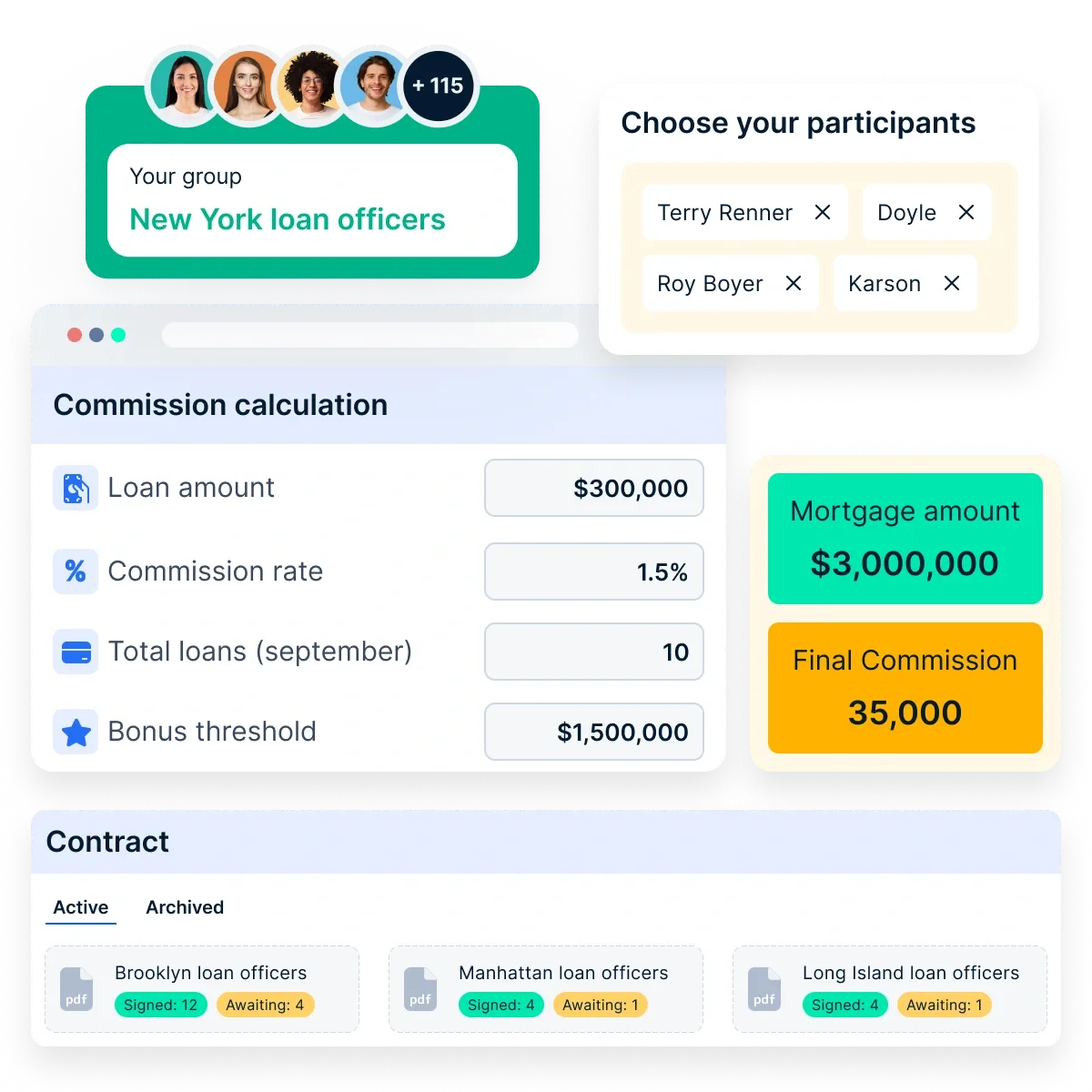
Compass helps businesses plan incentives with ease. It allows them to model different compensation plans and see their impact before finalizing. Companies can test various scenarios to find the best fit for their teams.
They can also analyze past plans to see which worked best and use them as a template. If market trends or company goals change, Compass makes it simple to adjust incentive plans anytime.
2. Pemantauan
Pemantauan yang konstan sangat penting untuk menjaga agar program tetap berjalan. Memantau rencana membantu para pemimpin membandingkannya dengan kinerja. Organisasi harus mengidentifikasi apakah tim penjualan memahami rencana tersebut. Mereka harus melihat kinerja mereka untuk membantu mereka memenuhi kriteria insentif yang diperlukan.
Pemantauan dapat menunjukkan adanya penyimpangan dalam rencana sehingga Anda dapat segera memperbaikinya. Implementasi rencana yang sukses membutuhkan dukungan dari semua anggota tim, dan pemantauan membantu mencapainya.
How can Compass help with monitoring the plan?
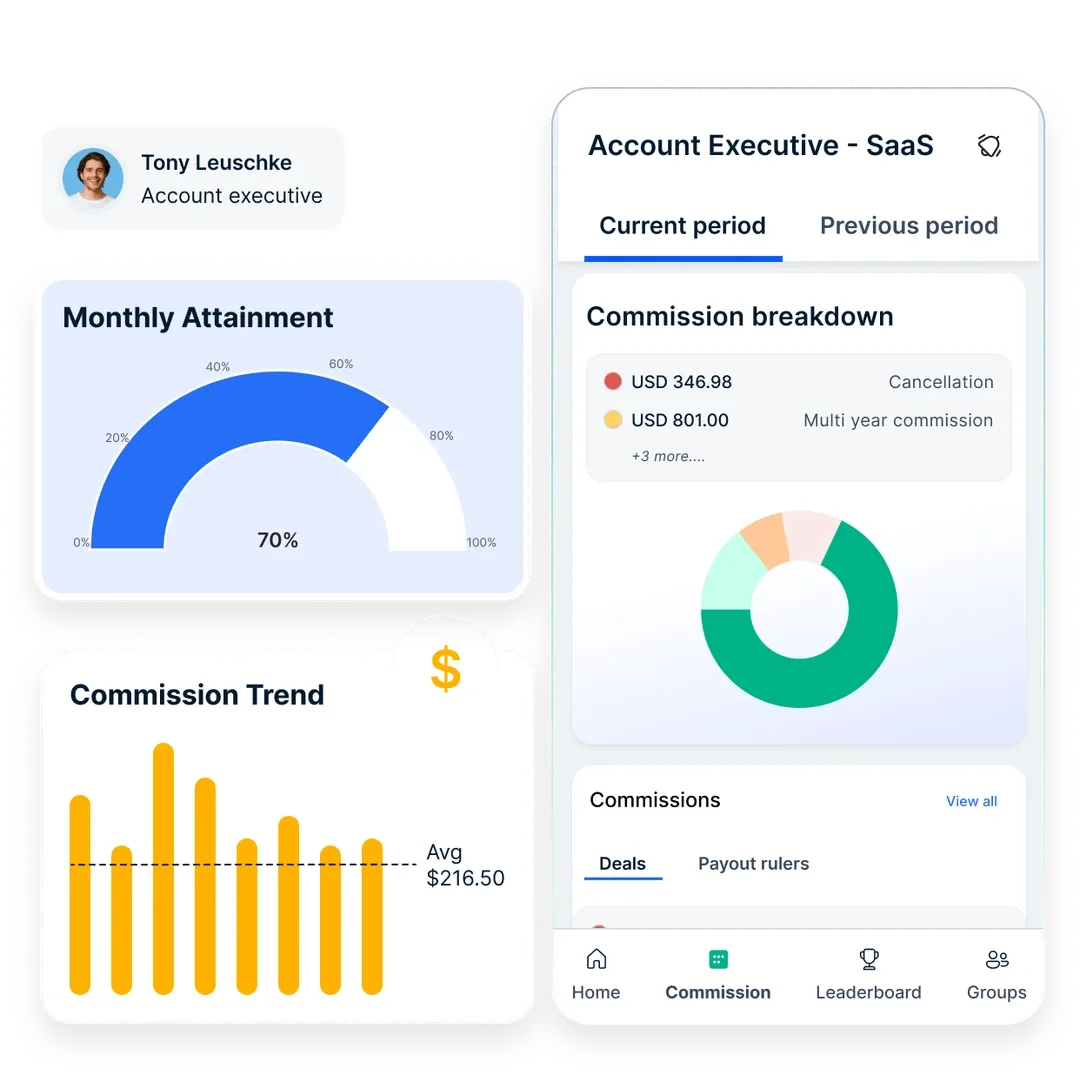
Compass helps with monitoring by providing detailed reports on quota attainment, territory performance, and plan effectiveness. It tracks sales reps' progress on a mobile app, giving managers, directors, and RevOps teams a clear view of performance.
Finance teams can analyze the revenue impact of commissions with custom reports for better budget planning. With these insights, leaders can quickly identify gaps, make corrections, and ensure the incentive plan stays effective.
3. Evaluasi
Evaluasi juga merupakan bagian dari pembuatan program insentif. Beberapa organisasi melakukan tinjauan tengah tahunan dan memberikan insentif. Evaluasi dapat dilakukan setelah periode ini untuk menentukan apakah program tersebut ideal.
Ini membantu menganalisis kinerja tim dalam kaitannya dengan rencana.
Beberapa pertanyaan yang harus Anda ajukan pada langkah ini adalah:
- Apakah program ini layak?
- Apakah perusahaan ini memberikan kebebasan yang cukup bagi karyawan untuk bekerja mencapai tujuan?
Jika hasil evaluasi menunjukkan bahwa program insentif berjalan dengan baik, maka program tersebut dapat dilanjutkan. Jika tidak, perubahan harus dilakukan agar program insentif tersebut sesuai dengan kebutuhan karyawan dan bisnis.
How can Compass help with evaluation?
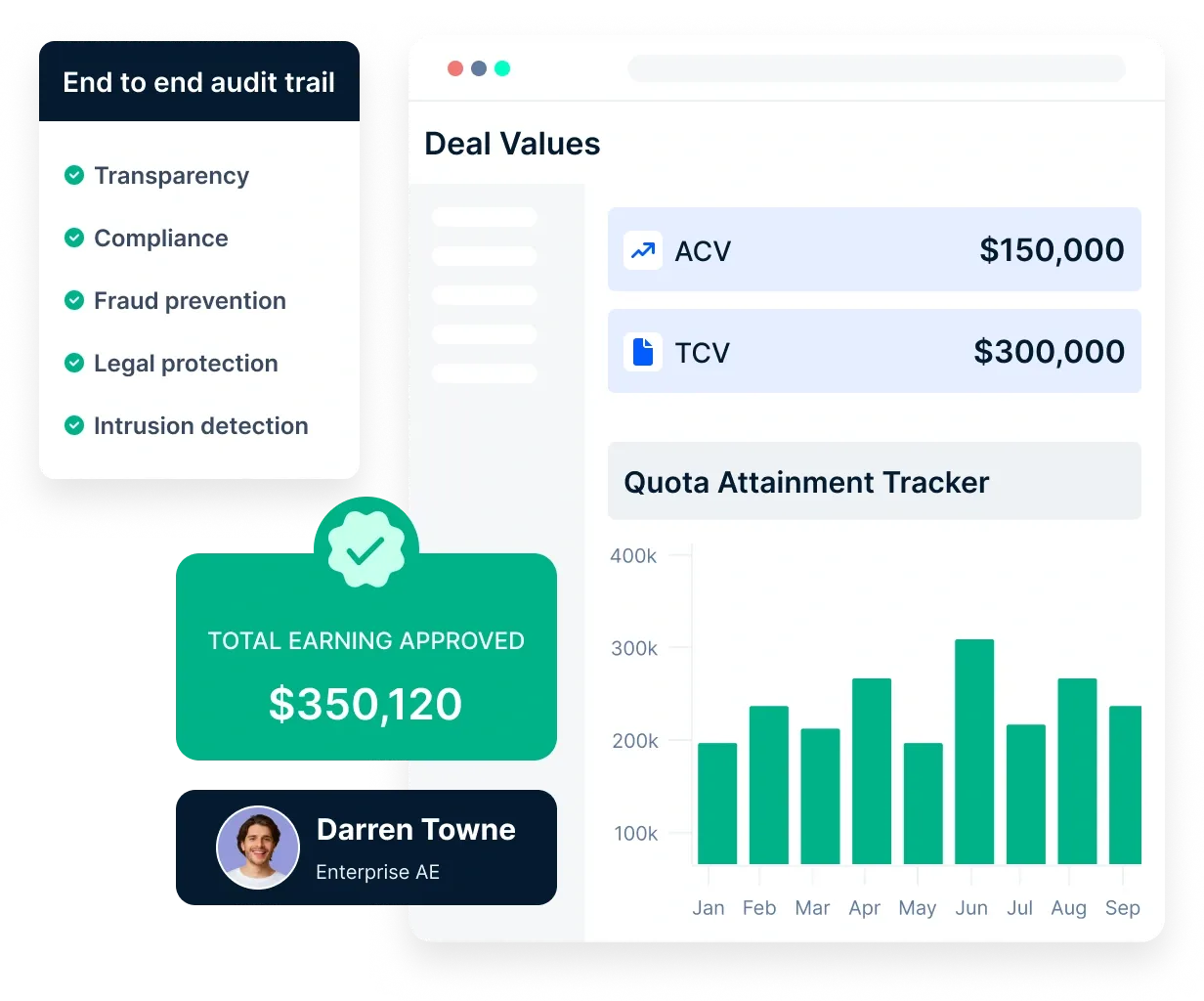
Compass helps organizations evaluate their incentive programs by providing advanced reporting, commission expense tracking, predictive analytics, and audit trails. With YTD commission reports and territory insights, businesses gain visibility into how commissions contribute to revenue.
Accurate financial reporting ensures better planning and analysis, while predictive analytics enable finance teams to assess the revenue impact of commissions for future budget allocations.
Additionally, the audit trail feature generates detailed reports on changes to sales commission plans, adjustments, and payment history, ensuring transparency and compliance. These insights help organizations determine the effectiveness of their incentive programs and make necessary adjustments for better alignment with business goals.
4. Pengoptimalan
Tahap evaluasi membantu mengidentifikasi program terbaik untuk organisasi. Insentif bukanlah pembayaran satu kali. Ini adalah proses yang berkelanjutan dan mungkin memerlukan revisi secara berkala.
Tolok ukur kinerja dapat menjadi usang tergantung pada keadaan. Perusahaan harus membuat program rencana yang optimal agar dapat menjadi tawaran yang bermanfaat bagi karyawan.
Bisnis Anda harus mengidentifikasi dan menutup celah dalam sistem jika ada. Mengoptimalkan program insentif dapat membantu dalam proses ini.
Penting juga untuk mempelajari cara membuat program penggajian yang baik. Kiat-kiat yang disebutkan di bawah ini dapat membantu!
Penutup
Gaji insentif merupakan stimulan dan memotivasi tim penjualan untuk berkontribusi secara efektif. Ini adalah salah satu cara terbaik untuk mendekatkan karyawan dengan tujuan bisnis. Program insentif harus menggabungkan poin-poin yang disebutkan di atas agar efektif.
Program insentif yang baik bermanfaat bagi organisasi dan juga karyawan. Jika Anda belum merencanakan program Anda, ingatlah poin-poin di atas untuk mengimplementasikan rencana yang terstruktur dengan baik.
Pertanyaan Umum
1. Is incentive pay hourly?
No, incentive pay is generally not hourly. It's usually tied to specific performance goals.
2. What is incentive pay?
Incentive pay is compensation designed to motivate employees to achieve specific goals and improve performance.
3. Is incentive pay a raise?
No, incentive pay is not a raise. A raise is an increase to base salary. Incentive pay is variable and depends on performance.
4. What do you mean by incentive wages?
Incentive wages are earnings based on exceeding a set standard of production or sales, motivating employees to be more productive.
5. Is incentive pay worth it?
Yes, incentive pay can be worth it. Studies show optimized incentive plans can significantly boost sales and improve employee motivation.
6. Why do organizations offer incentive pay?
Organizations offer incentive pay to drive revenue growth, motivate salespeople, align employee behavior with company goals, and improve overall performance.
What is considered incentive pay? Incentive pay includes bonuses, commissions, profit sharing, performance-based pay, and other rewards tied to achieving specific targets.
Are companies required to offer incentive pay? No, companies are generally not required to offer incentive pay. It's usually at the discretion of the employer, though employment contracts may stipulate otherwise.

